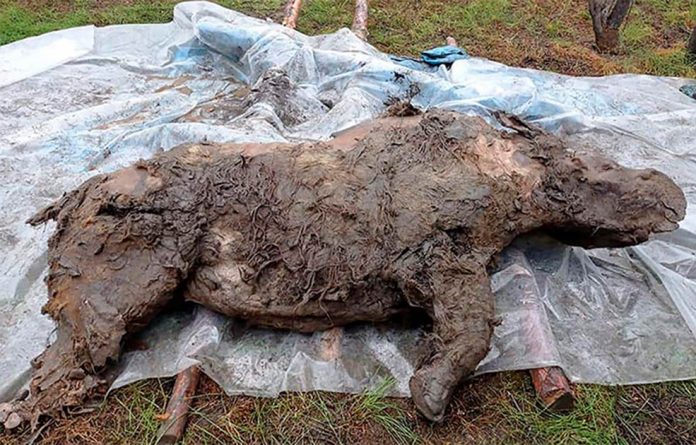Scientists have discovered one of the best-preserved Ice Age woolly rhinos from the melting permafrost in Russia’s extreme northern region.
The extinct species that likely roamed in the country’s diamond-producing region of Yakutia some 20,000 to 50,000 years ago has many of its internal organs still intact.
The carcass was found in August with most of its soft tissues, including intestine, lumps of fat and other parts such as limbs, hair, tooth and horn, scientist Valery Plotnikov was quoted as saying by Yakutia 24, a local media outlet.
Valery Plotnikov believes the woolly rhino was likely 3-4 year old when it died and the young mammal could have died by drowning.
It likely lived during the late Pleistocene era, which ended 11,700 years ago, according to researchers at the Russian Academy of Sciences.
“A small nasal horn has also been preserved – this is a rarity, since it decomposes rather quickly,” the palaeontologist with the Russian Academy of Sciences, was quoted by Yakutia 24 TV.
The marks of wearing on the horns suggested that the rhino was actively using it to find food, she said.
Similar major discoveries have been made in Russia’s vast Siberian region in recent years with the effects of climate change. Mammoths, woolly rhinos, Ice Age foal, and cave lion cubs have been found in the region as the permafrost is melting with the warming temperatures in the Arctic.
The recent carcass was recovered close to the area where another young woolly rhino was recovered in 2014. It was dated to be 34,000 years old and named Sasha.
The wooly rhino would be studied to understand its origin and radiocarbon studies would be conducted to know the precise date.
The remarkable discovery is reported to be by locals in the banks of Tirekhtyakh river of the Abyisky region.
In September, a well preserved carcass of a bear from Ice Age was discovered in the Lyakhovsky Islands in north-eastern Russia.





























